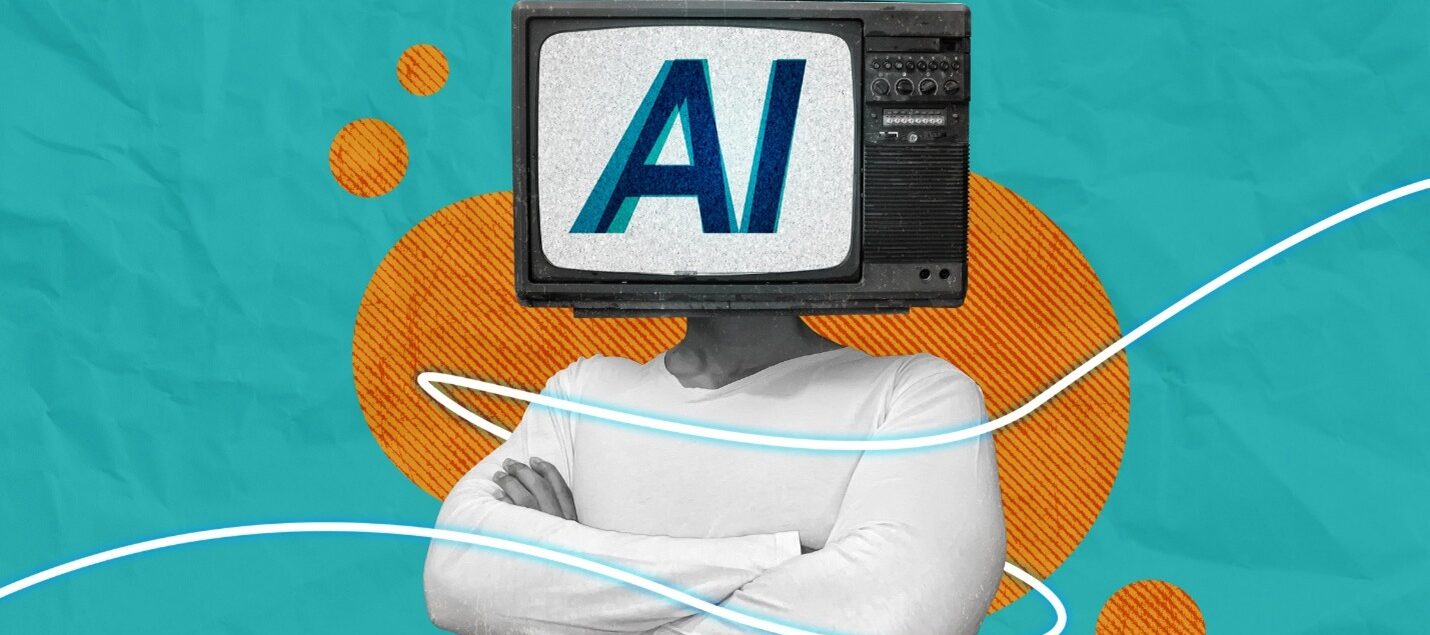Can AI Create What It Can’t Imagine?
In the late ’90s, I was standing in front of a whiteboard at one of my first ad agencies, sketching out a launch campaign for a scrappy tech startup — rough printouts taped up, ideas flying, pacing the floor with designers, developers, and writers trying to shape a message that meant something. No AI. No Canva. No Figma boards or auto-generated copy. Just sharp minds, too much caffeine, and the stubborn belief that story still mattered.
Before I was an agency creative, I was a web developer. And before that, a journalist. I had the unique opportunity to work across different mediums and disciplines. I was part of the digital Wild West back in the day, learning how to bridge the gap between storytelling and technology.
But there’s a question I’ve been thinking about lately: Can AI create what it can’t imagine? It’s a question that gets to the heart of the AI debate — and the reason why I believe AI can’t truly replace a human creative. AI might be able to generate content based on what’s been fed into it, but it doesn’t have imagination. It doesn’t have the ability to create something entirely new, something that hasn’t been done before. It lacks the depth, the nuance, and the risk-taking that human creativity brings to the table.
Let me illustrate why this is so important: A quote from David Ogilvy — one of my idols in advertising — is often cited as one of the cornerstones of creative thinking: “The consumer is not a moron, she is your wife.” While this was groundbreaking at the time, today, that same quote would be considered offensive, outdated, and sexist. It’s a prime example of why AI can’t be fully trusted. In Ogilvy’s day, this statement may have been seen as a sharp, clever remark about understanding your audience, but today it misses the mark entirely on respecting gender equality and modern sensibilities. AI, however, would likely still repeat this same line as a piece of “insight.” It doesn’t have the cultural context to understand why a phrase that was once seen as bold and witty is now considered harmful and archaic. I know this because I asked AI to provide a quote that would work well in my story. Oops! AI generated something that not only reflected Ogilvy’s thinking but also included this same outdated line — without any awareness that it no longer aligns with today’s values. That’s the danger. AI doesn’t have our cultural and contextual intelligence to filter out harmful or inappropriate material unless we explicitly program it to do so, which is a painstaking task at best. It lacks the human touch to understand the complexities of social change and evolving norms.
And that shortfall is not just a creative problem — it’s a business risk. AI’s inability to understand social shifts is dangerous when it comes to market research, sales psychology, and the fundamental difference between sales and marketing.
In quantitative research, AI can crunch numbers, identify trends, and surface anomalies — but it doesn’t know why those trends exist. It doesn’t see that a consumer shift toward sustainable products is often rooted in values, not just buying habits. In qualitative research, it can summarize interviews, but it can’t interpret human emotion, tone, or social context. That’s where the real insight lives.
When it comes to target audience psychology, AI can predict behavior based on inputs, but it lacks emotional intelligence. It doesn’t know how to appeal to aspiration, anxiety, nostalgia, or pride — the raw drivers of human decisions. It doesn’t know how to connect. That’s the difference between selling a product and building a brand.
And that brings us to the crucial distinction between sales and marketing. AI may help you optimize a clickthrough rate or AB test an email subject line, but marketing is about crafting a relationship — it’s about meaning. AI can assist in distribution. But without human oversight, it can easily produce campaigns that feel tone-deaf, insensitive, or disconnected from reality.
As the marketing adage often attributed to foundational thinkers like Philip Kotler explains: “The difference between marketing and sales is more than just semantics. Marketing is about attracting and engaging — building trust, awareness, and interest. Sales is about converting. One nurtures the relationship, the other closes the deal.” Marketing lays the emotional groundwork; sales capitalizes on it. And AI doesn’t fully understand either.
Great marketing considers the culture, the context, and the emotional landscape of its audience. AI just considers data.
Most of us in the digital world during the late ’90s were learning on the job. The concept of WYSIWYG (What You See Is What You Get) web development had just emerged. Tools like HotMetal Pro, Macromedia Dreamweaver, and WebMagic were considered cutting-edge. There were no roadmaps. No “best practices.” No AI copilots. And if you needed something done, you didn’t fake it — you hired the right person. If you needed a white paper, you brought in a technical writer. If you needed a Portuguese translation, you called a translator. If you needed a food photographer, you hired someone who knew how to light a plate. Everyone had a lane. Everyone brought something to the table. That’s what made the work feel crafted — not cranked out.
Let’s be clear: AI can be useful. We use it. I use it. It can help you jumpstart creativity when the room’s flat, draft multiple concepts quickly, summarize research or strategy decks, and speed up mockups and layouts. But AI doesn’t make bad writers good. It just makes them faster. It doesn’t teach storytelling. It doesn’t know why a certain phrase hits harder when it’s out of place. AI can’t take risks, and it doesn’t know how to sell an idea that’s half-baked but brilliant. That’s not creativity — that’s content.
And here’s the truth: you can smell AI-generated writing a mile away. It’s too balanced, too clean, too safe. It lacks rhythm, tension, and edge. It’s like a drum machine trying to play jazz. AI doesn’t know what it means to sell a story. It doesn’t have that human touch.
As an artist, painter, and filmmaker for over 30 years, I’ve experimented with AI-driven applications to see if they could tap into the same chaos, originality, and instinct that fuel my work. I wanted to see if machines could mirror the unpredictable flow that happens when you’re staring at a blank canvas or behind a lens — where emotion, story, and impulse collide. But most of the time, the results feel like something airbrushed on the side of a windowless ’79 cargo van or a velvet Elvis painting in front of a gas station. Technically clean, sure — but emotionally hollow. A kind of kitsch collage born from a milkshake of electrons scraped from the web. It rarely captures the raw edge, tension, or soul that comes from a human being pouring lived experience into their craft.
The creatives who will succeed in this AI-saturated world aren’t the ones trying to outrun the machines. They’re the ones learning how to ride them. The future belongs to the hybrids — the ones who can write and wireframe, pitch and prototype, code and craft narrative. Those who understand story, tech, timing, and emotion.
AI won’t replace a real creative director. It’ll just make a bad one obsolete faster. Creativity isn’t about speed or scale or prompts. It’s about taste. And AI can’t teach that.
If you’re seeking a new brand, position, or an enhanced brand theme that stands out in a sea of robotic AI-generated content, let’s talk. At HCP Associates, we specialize in crafting authentic, human-driven stories that resonate with your audience and your brand vision, mission, and voice. As a research-based marketing communications firm with nearly 40 years of experience, we can help you avoid the one-size-fits-all approach and create something truly unique. Reach out to us at HCP Associates, or send me a message at epolins@hcpassociates.com.

